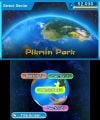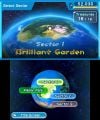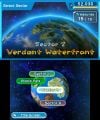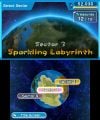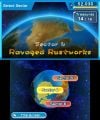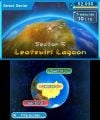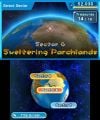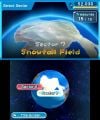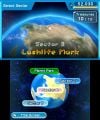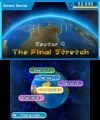Area
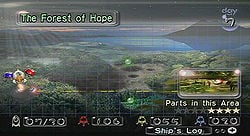
Areas are the main explorable locations in the Pikmin games. Each game in the series has a set of areas that can be visited, and these areas provide a range of environments to grow Pikmin, fight enemies, and collect items.
In each game, the leaders will only be able to access a single area initially, but over the course of the game, more areas will be unlocked. For instance, to access to the Perplexing Pool in Pikmin 2, a specific treasure, the Geographic Projection, must be collected. Gaining access to new areas is a major form of progression through the games.
Areas function differently in each game in the series. Each of the main games features an area selection screen, and at the beginning of the day, the player can select which area to land in from the areas unlocked. It is not possible to change the area one is exploring during a day. In Pikmin, ship parts are scattered around the 5 areas. In Pikmin 2, each of the 4 areas contains 3 or 4 entrances to caves, which contain most of the treasures needed to complete the game. In Pikmin 3, 4 of the 5 areas contain fruit, while the last is a standalone challenge. In Hey! Pikmin, areas function like linear standalone levels, and are organized into groups called sectors, of which there are 9. Each sector includes four normal areas, a secret area, a boss area, four Secret Spots, and a Sparklium Spring, with the exception of the last sector, which is made of only one area.
List
Pikmin
Pikmin 2
Pikmin 3
Hey! Pikmin
Due to the extensive number of areas in the game, only the list of sectors will be provided here:
Unlocking
The method used to unlock areas in each game differs. One area is unlocked from the start, but the others can only be accessed after certain conditions are met.
In Pikmin, areas are unlocked through collecting ship parts, the main collectible. The number of parts required to access each area is 1 for The Forest of Hope, 5 for The Forest Navel, 12 for The Distant Spring, and 29 for The Final Trial.
In Pikmin 2, the Awakening Wood and the Perplexing Pool are unlocked by collecting the Spherical Atlas and Geographic Projection respectively, while the Wistful Wild is unlocked by collecting ![]() × 10000 worth of treasure.
× 10000 worth of treasure.
In Pikmin 3, unlocking each area is tied to collecting a specific item. The Garden of Hope is unlocked by finding the S.S. Drake and completing day 1, the Distant Tundra is unlocked by collecting the Data Glutton, the Twilight River is unlocked by collecting the Folded Data Glutton, and the Formidable Oak is unlocked by collecting Louie for the second time. (To note is that although the Tropical Wilds is unlocked from the start, it cannot be landed in after day 1 before rescuing Brittany.)
In Hey! Pikmin, areas are unlocked by completing the previous area. Some areas have a secret exit which unlocks a different area to the standard exit, but both the standard next area and the secret next area will lead to the same area after that. Sectors are unlocked by completing the boss area in the previous sector, except for the final sector, which additionally requires collecting .
Features
In the main games of the Pikmin series, areas have consistent features in their design. They have a landing site where the Onion(s) and ship land at the beginning of the day, and these are usually connected in several directions to spaces nearby. Most spaces center around a certain enemy or theme. There are often obstacles between spaces that may increase the time it takes to get there or to restrict access to it until a certain Pikmin type is unlocked. There are also some spaces that function more as corridors between other spaces. There are often large loops in areas that provide multiple ways to access a part of the area. In Pikmin 3, there are loading zones that connect certain spaces that would be awkward to connect otherwise, such as a transition between a cave and the outside area.
Terrain
|
The following article or section is in need of assistance from someone who plays Pikmin 3. |
Above ground, terrain varies between Pikmin games. It has no real impact on the gameplay, but it does change the atmosphere and the different types of enemies that may be encountered.
Pikmin
Most areas in Pikmin have natural surfaces such as sand, soil and wood.
- Natural
- Grass: Found in most areas.
- Soil: This is what the leader and his Pikmin will be walking on for a majority of the time. Soil is found in every area in the game.
- Sand: Usually, when there is water, there is sand, especially in The Distant Spring. In it, about half the amount of land is submerged in water, and that amount of land is sand. It can also be found in the small pond area in The Impact Site and the large lake in The Forest Navel.
- Stone The rimstone lake section of The Forest Navel is mostly made of stone. Some sections of The Impact Site include stone. Most of the general area surrounding The Distant Spring is made out of mossy cut stone.
- Wood: Various tree stumps can be found in the game – in The Impact Site, The Forest of Hope and The Distant Spring. Bridges are made out of wood and can be walked on.
- Man-made
- Cardboard: The cardboard boxes in The Impact Site, The Forest of Hope and The Final Trial can be walked on by using a nearby rock as a platform.
- Rusted metal: In The Final Trial, large slabs of rusted metal are used to cross the body of water separating the landing site from the area where the player battles against the Emperor Bulblax, which actually takes place in a large metal "bowl" like arena. This metal bowl arena is actually a sideways rusty tire rim.
Pikmin 2
In Pikmin 2, the player will find a vast array of different types of terrain.
- Natural
- Snow: In some caverns, one may find the area to be covered in a blanket of snow. This terrain can be found in the Valley of Repose and its respective caverns.
- Grass: A common terrain, mostly found in above ground areas, with the Awakening Wood being a common example. Grass-like terrain can be found in the Perplexing Pool; however, considering the area's aquatic nature, it's possible that it's actually moss.
- Wood: As in the first game, tree stumps can be found, most notably in the Perplexing Pool.
- Sand: The Perplexing Pool has sand surrounding its lakes, and the concrete cave theme also uses sand as terrain.
- Mud: Mud can be found near the pothole cover of the Valley of Repose, and the surface around the entrance to the Hole of Heroes appears to also be made of mud.
- Man-made
- Concrete: Can be found in a few areas; most of the Valley of Repose is formed from concrete. This is due to it being a crosswalk of sorts.
- Tile: This style consists of simple turquoise-colored tile filled floors and walls, which have sand filled in between each tile. Areas with this style usually have water, which is typically found in small descents of ground. The tiles may be interrupted by sand or a metallic floor.
- Stone formations: Inside the Perplexing Pool, there are odd stones formations that are mysteriously shaped, some of which are walk-able. These odd formations range from simple pathways to maze-like structures.
- Seesaw blocks: In several areas, there are sets of seesaw blocks. They can be used to lift Pikmin and the leaders to higher areas, and several sets of these scales must be navigated to obtain treasure.
- Rusted metal: The landing area of the Wistful Wild is actually an old road sign, in addition to being on top of a sideways rusty tire rim. The fire path that was made of rusty metal from The Final Trial can also be considered a metallic surface. There is rusty metal that can be found by the White Flower Garden's entrance. There is also the metal theme for caves that is made almost entirely out of rusted metal.
- Dirty metal: There is a set of corridors made out of metal pipes commonly used with the tile theme for caves mentioned above. These pipes don't appear to be corroded, but are dirty instead.
Pikmin 3
- Natural
- Glass: Shards of glass and large crystal formations are present and can serve as obstacles or have valuable items encased inside of them. They can be shattered by being continuously hit with Rock Pikmin.
- Sand: Sand flooring exists in the Tropical Wilds. There is also plenty of sand in several areas of Mission Mode and Bingo Battle.
- Wood: There are multiple places where wood is incorporated into the terrain. In the Tropical Wilds, wood is accessible to walk on, but has no special features. In the Distant Tundra, frozen wood is incorporated as well as a walkway to the cave where Charlie is rescued. Some clipboards can also be walked on.
- Snow: In the Distant Tundra, snow can be found blanketing much of the area. It makes a crunching sound when leaders walk on it, similar to that in Pikmin 2.
- Grass: The most common terrain, it covers most floors of areas and has no special qualities.
- Rock: Caves are structured from rock, and types range from simple brown rock, similar to that in Pikmin and Pikmin 2, to odd moss-covered rock, looking like granite.
- Mud: Terrain that exists primarily in the Garden of Hope, mainly in the arena of the Quaggled Mireclops. This terrain may change from water back to mud by the boss' stomps.
- Lily pads: Lily pads drift along the river, allowing leaders and Pikmin to travel across it and find more sub-areas.
- Man-made
- Tile: Simple tiling that has sand filled between the cracks. Similar to that in Pikmin 2, but it is only present in very few places.
- Buckets: A large bucket serves as a bridge to the Quaggled Mireclops' arena. In some Bingo Battle stages, plastic buckets can be found under the Onions.
- Scales: A set of scales can be found in areas in both Story and Mission Mode. These scales have a redesign from Pikmin 2, and can be used to get to fruits and to further sub-areas.
- Rusted metal: Metal similar to that in Pikmin 2, but darker and with less or more rust.
- Pipes: They are unique ways of transport in the Bingo Battle area Rusted Labyrinth. They allow leaders to slide to lower areas, while geysers can transport them back up to the upper areas.
- Conveyor belts: Conveyor belts are unique ways of transport in the Mission Mode area Clockwork Chasm, with switches to change the direction of movement. These switches can be activated using Pikmin.
- Bricks: Self-explanatory. Some are found in Twilight River and cannot be interacted with.
Hey! Pikmin
In Hey! Pikmin, the player can find a fairly large variety of environments. Each sector of the game features a unique environment, which serves to set the ambience. However, some areas vary from the atmosphere of the sector where they're located.
- Brilliant Garden : The first sector of the game has rather common terrain, made of grass and foliage.
- Verdant Waterfront : This sector mainly focuses on water environments, such as lakes, as well as all the plant-life terrain found around lakes.
- Sparkling Labyrinth : A rocky sector, with terrain made of rocks and crystals.
- Ravaged Rustworks : This sector features human-made materials, such as metal pipes and tubes.
- Leafswirl Lagoon : The environment of this sector is pretty focused on autumn, with the terrain being mostly dead leaves and dirt.
- Sweltering Parchlands : This sector is mostly themed around fire, so the terrain consists of dirt, coal, and burned vegetation.
- Snowfall Field : The exact opposite of the previous sector; this time, snow makes up most of the terrain, and this area symbolizes winter.
- Lushlife Murk and The Final Stretch : The last areas are focused on poisoned environments; the terrain usually consists of barren dirt and rock.
Relations
Though not directly confirmed, it is heavily implied that some areas in Pikmin 2 are actually areas from Pikmin, albeit changed. The Awakening Wood has the same layout as The Forest of Hope. It has been implied by Olimar that these are the same location, as read on his journal about the Geographic Projection.[1] Likewise, the Perplexing Pool shares the same layout as The Distant Spring, with some changes (such as the concrete section at the landing site). The Wistful Wild is a combination of The Impact Site and The Final Trial, with some new terrain connecting the areas. The Valley of Repose is not a remade version of The Forest Navel or any other area from the first Pikmin game and is completely new.
All areas in Pikmin 3 are original, while the forest shown in the title screen is almost the same as the western path of the Awakening Wood. This is best seen with a model viewer, because of the water and angles. This comparison is detailed here. The Mission Mode stage Forgotten Cove is a remade version of the The Forest Navel.
The Forest of Hope's radar pattern on top of a map of the Awakening Wood.
Gallery
Trivia
- The main areas in Pikmin 2 and Pikmin 3 each represent a season: the Valley of Repose and the Distant Tundra are winter, the Awakening Wood and the Garden of Hope are spring, the Perplexing Pool and Tropical Wilds are summer, and the Wistful Wild and Twilight River are autumn.
- The main areas in Pikmin 3 are also each located on a different continent of Earth: Tropical Wilds is Antarctica, Garden of Hope is Australia, Distant Tundra is Asia, and Twilight River is South America.
- The names of the areas in Pikmin 3 all have the same number of characters – 14.
- In Pikmin and Pikmin 2, some meteors appear on the area selection screen's sky, occasionally. A large cluster of them temporarily appears when the last area of each game is unlocked.
Names in other languages
Sector
|
Area (Hey! Pikmin)
|
See also
References
- ^ “The interior of this hemisphere contains a chip coded with charts detailing a new region. I explored this forest the last time I was here, but it's clear that it has undergone some dramatic changes. The plants and animals have also evolved significantly. I've given this forest a new name... The Awakening Wood. I must begin to form a hypothesis to explain why the forest changed so rapidly.” – Captain Olimar in Olimar's journal for the Geographic Projection
| Pikmin areas |
|---|
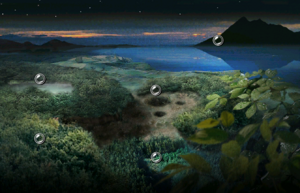 Click an area on the image
The Impact Site • The Forest of Hope • The Forest Navel • The Distant Spring • The Final Trial animtest • codetest • E3play_3 • map_06 • play_4 • route • shapetst • testmap • tuto1 • tuto2 |
| Pikmin 2 areas |
|---|
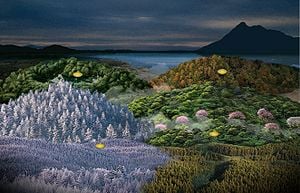 Click an area on the image
Valley of Repose • Awakening Wood • Perplexing Pool • Wistful Wild |
| Pikmin 3 areas |
|---|
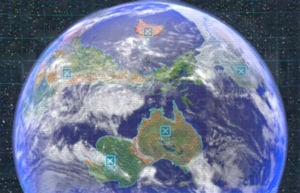 Click an area on the image Tropical Wilds • Garden of Hope • Distant Tundra • Twilight River • Formidable Oak |
| Hey! Pikmin sectors |
|---|
| Brilliant Garden • Verdant Waterfront • Sparkling Labyrinth • Ravaged Rustworks • Leafswirl Lagoon • Sweltering Parchlands • Snowfall Field • Lushlife Murk • The Final Stretch |














